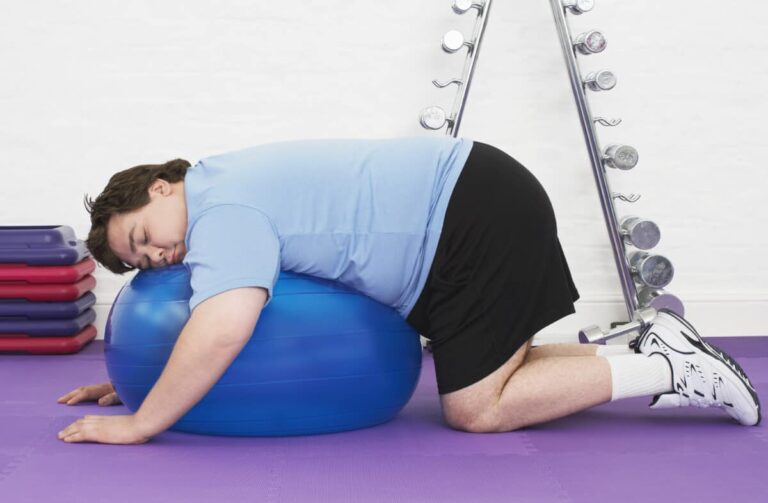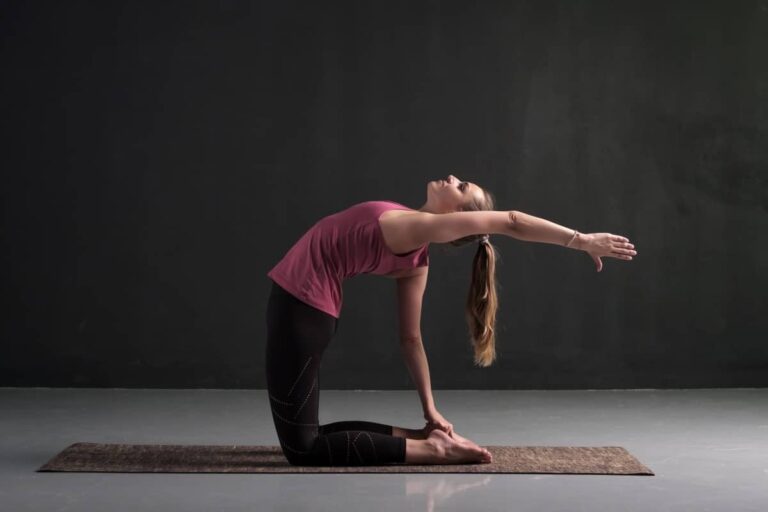Improve Your Uphill Running Training: 11 Drills That Work
When I was in college, I would run up over 1200 feet in about a mile every Saturday. My cardiovascular system was amazing–I remember taking a fitness test for my first job out of college and the lady running the treadmill was impressed by my aerobic capacity. (How’s that for charming?) Uphill running is incredible! How can we improve it?
You want to focus on high-intensity interval training on uphills and flat ground as well as weighted vest training on flat ground. Uphill sprints should also be included in your workout. Developing muscles around your thighs and calves are also great ways to improve your strength.
In the rest of this article, I will go over eleven drills and exercises that can help you improve your uphill running. Remember, it’s not all about running fitness or technique. It would help if you also had the muscles to push your body along, so we will discuss that before discussing a few tips I have picked up over the years. Let’s get into it.

11 Drills That Improve Your Uphill Running
I don’t only want to list a few running drills. The importance of building muscle in the right areas is often overlooked. So, I want to focus on that as well. Your uphill running will improve significantly if you can find the right balance between running drills and weight training. The key areas you want to target with these exercises are:
- Endurance
- Strength
- Core strength
- Speed
- Stability
Many of these suggestions come from personal experience, so you might see a few techniques you wouldn’t see in other how-to articles. With all of that out of the way, here are eleven tips to efficiently improve your uphill training.
HIIT On A Flat Surface
High-intensity interval training is one of the best exercises you can do to improve your overall fitness and core strength. To improve your uphill running training plan, you will focus on two types of interval training.
The first one of these is to train on a regular flat surface. Your intervals will depend on your fitness levels. As a guideline, I will provide you with times that you should aim to reach depending on your fitness level:
| Fitness Level | Workout Intensity |
|---|---|
| Beginner | 10 seconds full intensity + 20 seconds of rest in between |
| Moderately Fit | 20 seconds full intensity + 20 seconds of rest in between |
| Fit | 30 seconds full intensity + 15 seconds rest in between |
That is my custom plan. Remember, the first few intervals might not seem challenging at all, but once you hit the 10 to 15-minute mark of constant training, you will start to feel those 10 to 30 seconds, and that is the point. You want slowly build up and increase your overall endurance.
For all types of high-intensity interval intensity training, it is essential that you keep moving. The rest periods are not meant for actual resting; instead, it’s where you slow down to a brisk walk or jog, making an active recovery. This will help you keep up your momentum. It’s a LOT easier to transition to a sprint if you’re jogging than if you’re laying down on the ground.
HIIT Using A Small Bank
You don’t have to have giant hills to do HIIT with uphill running. If you have a bank that is big enough to sustain several seconds of running then that’s a great start. You can also make the distance longer if you go diagonally across the hill instead of directly up it (if possible).
If you can, find a bank or uphill slope that is large enough so that most of your running can be done going uphill. Try to stick with the 10, 20, or 30-second intervals listed above in terms of the training itself.
It would be best if you aimed to keep the training going for around 15 minutes. If you cannot manage that, it’s OK; at least you have something to build up to. Over time, you will notice your progress, and you will see that it is working. Once you start to see progress, all the sweat becomes worth it.
Remember with any high-intensity interval training, you have to be careful to not overdo it. Going from 0 to high intensity can actually be life-threatening, so there is a risk of injury if you overdo it and push yourself beyond your limit. (clevelandclinic.org for more details)
Uphill Sprints
These will push you to your limit. Find a true hill, a big one!
Firstly, to do uphill sprints, you will want to time yourself and make sure that you have a large hill enough for you to Sprint for at least 15 to 30 seconds at a time. Here is my guideline:
- Stretch properly. Uphill sprinting can be highly taxing on your muscles.
- Find a hill that is long enough for 30 second uphill sprints.
- Sprint uphill for 15 to 30 seconds at full intensity. For advanced runners, you can do 1 to 2-minute sprints.
- Walk back down the hill.
- Take a 20-second break
- Remember to keep moving to maintain your momentum
- Go again
You want to keep this up for as long as possible. Pay attention to your body. If you can do this for 15 minutes you are doing great.
Upside Down Pyramid
The upside-down pyramid is one of the most effective yet most challenging drills on this list. I like to mix mine with circuit training, which is why I don’t have circuits on this list.
You will want to set the lap limit to at least 5. You will have three times in each lap, starting at 1 ½ minutes, one minute, and 30 seconds. If you are an advanced runner, you can start with two minutes and go down in increments of 30 seconds. For now, let’s break down what the exercise should look like:
- Run uphill for 1 ½ minutes at a steady pace. Cool down while coming back down the hill.
- Run uphill at a moderately fast pace for 1 minute. Cool down on the way down.
- Run uphill at full pace for 30 seconds.
- Repeat that five times without taking a break.
As the duration of your sprints decreases, the intensity and pace of the run should increase.
Weighted Vest Running On A Flat Surface
One of the main reasons running uphill is so tricky is because you are fighting against gravity. That is why wearing a weighted vest while running on a flat surface is an excellent way of preparing your body for the challenges you will face when running up a hill.
No, it is not the exact same thing, but it puts extra weight on your body, increasing your overall strength.
There is nothing special about this training. You have to put on a weighted vest and go for a run as you normally would. With that said, I don’t know much about the danger of running with a weighted vest during uphill training. (see this study for details on acute performance benefits).

Furthermore, you can even use lower body weights to improve sprinting performance–check out this study if you want the nitty-gritty details.
It might seem like a good idea to get you more accustomed to the fight against gravity, but all it does is put a lot of strain on your hamstrings which you want to avoid.
Trail Running
Trail running IS AWESOME for hill running. Trail running goes up and goes down, so you’ll get used to all sorts of terrain.
- Trails often have slopes.
- The uphill parts can vary in angle and distance.
- Trail running can build balance muscles
- Running on a trail helps build lower body strength.
Ever been on a trail run before? Check out our getting started guide to get your feet wet for running on the trail.
We also need to consider that running on a trail can be therapeutic and fun simultaneously. So, if you feel mentally exhausted from constantly training in the same location, it is good to introduce yourself to a new environment.
Trail running shoes are great and make it easier to run on trails, but they aren’t required, necessarily. See our article about whether trail shoes last longer to get a better idea if you need them or not.
Walking Lunges
For the rest of this section, we are going to start focusing more on muscle-building exercises and exercises aimed at helping your body deal with the stress of running uphill. So, it’s time to put your running shoes away and focus on preparing your body instead of your running technique.
Walking lunges provide many benefits; mainly, they work the muscles you need when running. More specifically, the muscles you use when running uphill. Walking lunges work these muscles:
- Glutes: These work when you lift your thighs.
- Thighs: Includes your hamstrings, quadriceps, and adductors.
- Calves: Provides stability.
Because walking lunges target so many muscles, it can be used as an all-around workout, and if you can’t get to the gym, you could get away by only doing this exercise. Start off using your body weight and as you progress, add weights.
Box Step Ups
Box step-ups are common in CrossFit gyms. The exercise works on the same muscles that walking lunges do. However, the box step-up also promotes stability and balance. What makes it significantly different from walking lunges is the effort that goes into it.
The height of the box is critical. If you haven’t done box jumps, before; you should go for one that is about a step or two high. On the other hand, you should never have it higher than you are comfortable with because you can risk getting injured. Ideally, the box should be 2 feet tall.
You can also incorporate weighted box step-ups. If you have a weighted vest, you can wear one of those, and it should be a lot more comfortable than holding dumbbells. However, dumbells also work if you do not have a weighted vest.
Deadlifts
Deadlifts are one of my favorite exercises. It is known as a compound exercise. The reasoning for its name is that you are lifting something off of the ground that is considered dead weight.
Deadlifts need to be done carefully; you never want to go too heavy. You can receive many benefits from deadlifting without adding any weight to the bar. Remember, form is everything when it comes to deadlifts. Keep your back straight and use your hips when bringing the bar up.
These work so well for building lower body strength from your glutes, quadriceps, and even your calves. Most importantly, it builds core strength which helps you when running uphill.
Leg Press
You could argue that runners shouldn’t work on building muscle because it slows them down; that is true to some degree. However, using light weights and lots of reps, you can build lean muscle that makes your lower body stronger and better suited to running on flat surfaces and on hills.
If you have access to a gym, you want to use the leg press machine. If you have never used one before, you should ask someone who works at the gym for some help. I recommend starting with no weight and first working on your form. You can slowly increase the weight as you go along.
When it comes to training specifically for running, I always recommend lots of reps with lightweights. Try to aim for around four or five sets, each containing 12 to 15 repetitions. The leg press is simple. However, there are a few things that you want to avoid:
- Do not lock your knees when pressing up
- Keep your hands on the handlebars and not on your thighs or knees.
- Do not go too heavy as it could affect your running.
Calf Raises
Your calves are responsible for providing stability. They are also responsible for helping you rotate, flex and move your feet forward. To say that they are an essential muscle is an understatement.
Building your calf muscles can significantly help you when running, and if you are running uphill, having strong calves can prevent injuries such as shin splints and joint issues because they will deal with most of the stress of running.
For calf raises, most people can lift more weight than they think; however, as I’ve mentioned a few times in this article, try and stick with low weights and more repetitions as you did with the leg press. Try and go for four or five sets of 12 to 15 repetitions.
You can also wear a weighted vest or something similar, lean on a wall with your forearms and do the raises. To do calf raises, push down on the upper ball of your foot, lifting your heel in the process.
5 Tips For Running Uphill
Now that we have gone through the exercises and drills that will help you improve in your uphill running, I think it is vital to give you a few tips that should make running uphill feel more comfortable and less taxing on your body.
Following these steps will make it feel like you have already improved, even if you have not yet put much training into it. Basically, we will discuss things that contribute to your technique and form. With that said, let’s jump into it.
Focus On Your Form
Your technique is more important than your effort when it comes to any exercise. For example, If you run for 30 minutes and at a stable pace while breathing correctly, you are getting more benefits than if you were to run for 30 minutes running erratically and not breathing correctly.
There are several things you should keep in mind when running uphill. Focusing on these four techniques will make it so that your runs are more comfortable. These techniques include:
- Shorten your stride: It may take a few more steps to reach your destination, but a shorter stride while running uphill is more energy efficient.
- Keep your head in a natural position: Don’t look directly down, don’t crane your head up. Keep it at a natural down angle so you can see your steps in front of you.
- Breathe: To properly engage your diaphragm, you want to breathe through your mouth and your nose simultaneously. Take moderate to deep breaths, and always be mindful of how you are breathing. (flipbelt for more details)
- Good posture: It is OK to slouch slightly when you are running uphill. It almost feels more natural when you are running up a hill. However, try and keep your body and spine as straight as possible.
Good running technique comes over time. Some professional runners still need to think about their technique while running constantly. So, if you do not get it on your first few tries, don’t worry, just keep practicing, and eventually, running will feel natural to you.
Think About Effort, Not Pace
When doing your drills to get better at running uphill, it is OK to focus on pace for short amounts of time, but when you are running uphill, you don’t typically want to focus on speed because it is not a good indicator of your effort.
Instead of thinking about pace, think about the amount of effort going into your run. Over time, you will find a steady pace suited to your fitness and strength levels. As your pace and fitness increase, your amount of effort still stays the most accurate measurement of how your run is going.
Always Warm-up
It is advisable to warm up before you do any exercise. That statement includes running on flat surfaces but especially when running uphill. When doing uphill running, you will be engaging a lot more muscles than you do when you run on flat surfaces.
Also, you will be pushing those muscles harder than you would when you are running on flat ground. So, to prevent an injury from happening, you want to warm up as much as you can.
A good warm-up could last anywhere from 5 to 10 minutes. If you have already done your stretches, five minutes should be more than enough time. You want to warm up by brisk walking or even some cardio movements like jumping jacks.
Stretch
Stretching is vital when running. You should always stretch before your warm-up, and you should always stretch after your workout. It is one of the best ways of preventing injuries and promoting healthy muscle recovery.
You should stretch for at least 5 minutes, and because you are running, you want to focus on stretching your thigh muscles, calves, hamstrings, and back. Also, you want to spend a little bit of time stretching your upper body just so that your entire body is loose.
Stretching is a bit controversial (source) whether it provides any injury protection, so you might have to find out for yourself what feels best for you.
Do Not Overdo It
You often hear people saying push past your limit. However, that statement can be very irresponsible because there is a reason those limits exist. Once you start to overexert yourself, your form starts to drop, and the benefits you receive from your run also begin to fall.
Also, if you overdo it, you hamper the recovery process, which means you might not be able to run again for two or three days, and that can be more harmful to your overall goal than not pushing hard enough.
I am not saying you should not give it to all; you absolutely should. I am saying that when your body starts telling you that enough is enough, listen to your body.





